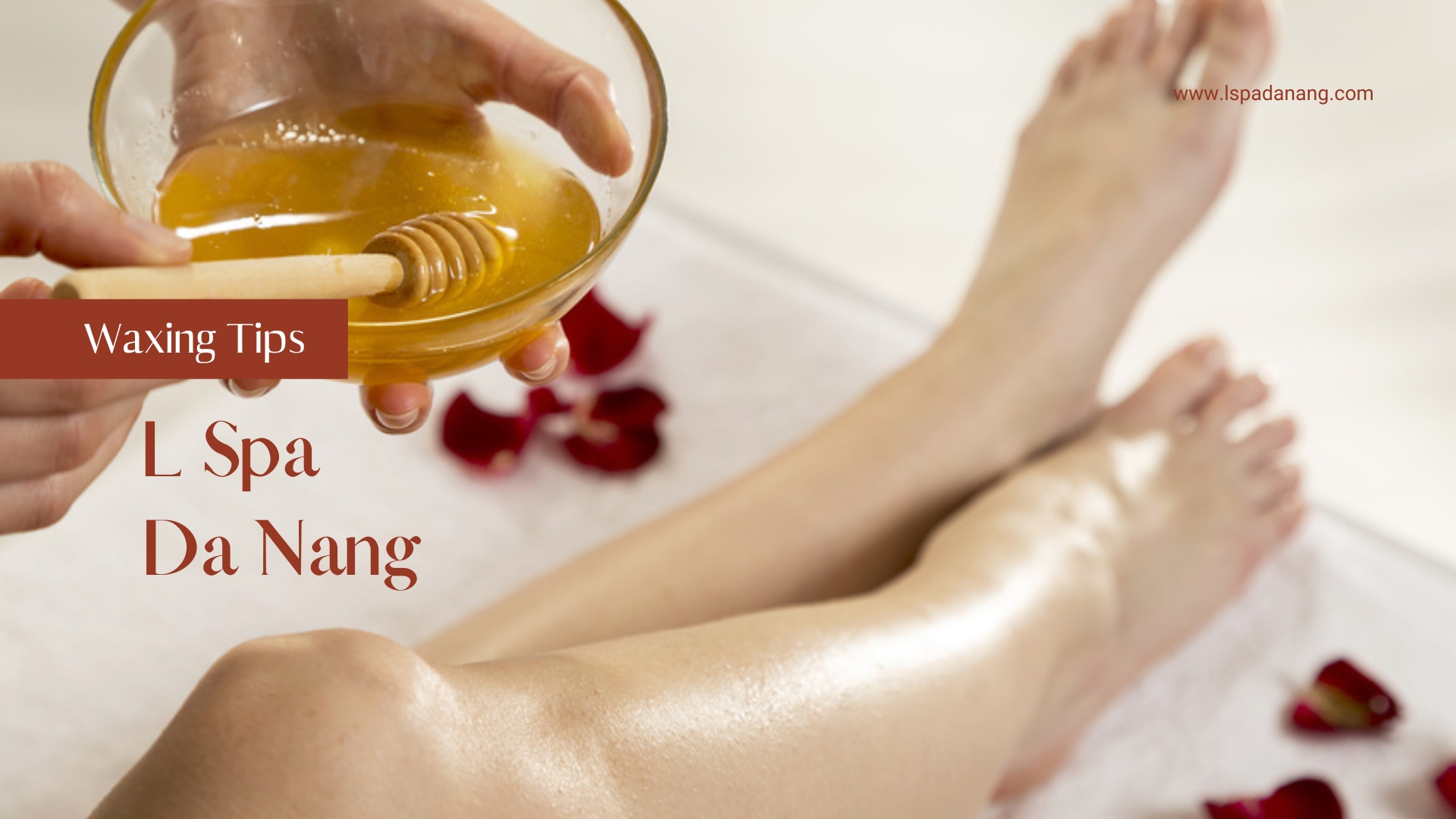In this guide, we will explore Full Hand Waxing and uncover efficient methods for removing hand hair at home. The article delves into the pros and cons of full hand waxing, vital considerations before initiating hand waxing, and natural approaches for hand hair removal. Whether you’re considering professional waxing or exploring at-home solutions, this comprehensive resource offers essential information to assist you in achieving smooth and hair-free hands.

What Is Full Hand Waxing?
Full hand waxing refers to the hair removal process that involves applying wax to the entire surface of the hands to eliminate unwanted hair. During this procedure, a waxing professional or individual applies warm wax to the hands, allowing it to adhere to the hair. A cloth or strip is then pressed onto the waxed area and swiftly pulled off, removing the wax along with the unwanted hair from the hands.
This method aims to leave the skin smooth and hair-free, providing a longer-lasting result compared to shaving. Full hand waxing is a common beauty and grooming practice for those seeking a more extended period of hairlessness on their hands.
Pros And Cons Of Full Hand Waxing
Pros of Full Hand Waxing:
- Smooth Skin: Waxing leaves the skin on your hands feeling smooth and hair-free.
- Long-Lasting Results: Compared to shaving, waxing provides longer-lasting results, with hair regrowth taking several weeks.
- Finer Regrowth: Over time, waxed hair tends to grow back finer and softer, making it less noticeable.
- No Stubble: Unlike shaving, waxing doesn’t leave behind stubble, providing a more aesthetically pleasing result.
- Exfoliation: Waxing also acts as a form of exfoliation, removing dead skin cells along with the hair.
- Precision: A skilled esthetician can provide precise hair removal, ensuring a neat and well-defined appearance.
- Reduced Irritation: Waxing typically causes less irritation than shaving, which can lead to razor burn and ingrown hairs.
- Convenience: Once the waxing session is done, there’s no need for daily maintenance, saving time in your grooming routine.
Cons of Full Hand Waxing:
- Discomfort or Pain: Some individuals may experience discomfort or pain during the waxing process, especially if it’s their first time or if they have a low pain threshold.
- Redness and Irritation: Temporary redness or irritation is common after waxing, but this usually subsides within a day or two.
- Cost: Professional waxing services can be more expensive than at-home alternatives or other hair removal methods.
- Regrowth Period: While waxing provides longer-lasting results, there will eventually be a regrowth period, and the process needs to be repeated for maintenance.
- Ingrown Hairs: Although less common than with shaving, there is still a risk of developing ingrown hairs after waxing.
- Preparation Time: Unlike some quick hair removal methods, waxing may require a bit of preparation, including allowing the hair to grow to a suitable length.
- Skin Sensitivity: Individuals with highly sensitive skin may experience more pronounced redness or irritation.
- Risk of Burns or Allergic Reactions: There is a minimal risk of burns or allergic reactions, particularly if the wax is too hot or if the individual has specific sensitivities.
Things To Take Care Of Before You Start Hand Waxing

Before you start hand waxing, it’s essential to take certain precautions and prepare adequately to ensure a smooth and effective waxing experience. Here are things to take care of before you start hand waxing:
- Hair Length: Ensure that the hair on your hands is at least a quarter of an inch long. This length allows the wax to grip the hair effectively for optimal results.
- Exfoliation: Exfoliate your hands a day or two before waxing. This helps remove dead skin cells, allowing the wax to adhere better and reducing the risk of ingrown hairs.
- Cleanliness: Wash your hands thoroughly before the waxing session to remove any oils, lotions, or debris. Clean skin ensures better adhesion of the wax.
- Skin Sensitivity Check: If you have sensitive skin or are prone to allergies, consider doing a patch test with a small amount of wax on a small area to check for any adverse reactions.
- Avoid Sun Exposure: It’s advisable to avoid prolonged sun exposure or tanning beds before waxing, as the skin may be more sensitive.
- No Moisturizers or Oils: Refrain from applying moisturizers, oils, or any other products to your hands on the day of waxing. These can create a barrier, preventing the wax from effectively gripping the hair.
- Pain Management: If you’re concerned about pain during the waxing process, you can take an over-the-counter pain reliever about 30 minutes before your appointment.
- Avoid Hot Baths or Showers: Steer clear of hot baths or showers immediately before waxing, as the heat can make your skin more sensitive.
- Consult a Professional: If you’re new to waxing or uncomfortable doing it yourself, consider seeking the services of a professional esthetician. They can ensure a proper and less painful waxing experience.
- Relaxation: Try to stay calm and relaxed before the waxing session. Tension can make the experience more uncomfortable, so take a few deep breaths and prepare yourself mentally.
By addressing these aspects before hand waxing, you can enhance the effectiveness of the process and minimize potential discomfort or complications.
How To Remove Hand Hair At Home?
Materials Needed:
- Waxing kit (pre-made wax strips or hot wax)
- Wax warmer (if using hot wax)
- Wooden spatula
- Waxing strips (if using hot wax)
- Baby oil or post-waxing wipes
- Moisturizer
Procedure:
- Prepare the Wax:
- If using pre-made wax strips, warm them up by rubbing between your hands.
- If using hot wax, follow the instructions on the kit to heat the wax to the appropriate temperature using a wax warmer.
- Clean and Dry Hands:
- Wash your hands thoroughly to remove any dirt, oils, or lotions.
- Ensure your hands are completely dry before applying wax.
- Apply Wax:
- For pre-made wax strips, simply apply the strip to the desired area, pressing it in the direction of hair growth.
- If using hot wax, use a wooden spatula to apply the wax in the direction of hair growth. Apply a thin, even layer.
- Remove Hair:
- For pre-made strips, pull the strip quickly against the direction of hair growth.
- If using hot wax, wait for the wax to cool slightly and then pull it off swiftly in the opposite direction of hair growth.
- Repeat as Necessary:
- Continue the process until you’ve removed hair from the entire area.
- Cleanse and Soothe:
- Use baby oil or post-waxing wipes to remove any wax residue.
- Apply a soothing moisturizer to calm the skin.
Note: Follow the specific instructions provided with your waxing kit for the best results.
Alternative Methods

- Shaving:
- Use a clean and sharp razor.
- Apply shaving cream or gel.
- Shave in the direction of hair growth.
- Moisturize after shaving.
- Depilatory Creams:
- Apply the cream to the hair-covered area.
- Follow the product instructions for the recommended time.
- Wipe away the cream and hair using a damp cloth.
Before trying any hair removal method, consider your skin type and any potential sensitivities or allergies. Perform a patch test if you’re using a product for the first time. Always follow safety precautions and instructions provided by the hair removal product.
When To See A Doctor?
While most cases of hair removal, including at-home methods like waxing, are generally safe, there are situations where you should consider consulting a doctor:
- Severe Irritation or Allergic Reaction:
- If you experience severe redness, swelling, or itching that persists for an extended period after hair removal, it may indicate an allergic reaction or skin irritation.
- Infection:
- If you notice signs of infection such as increased redness, warmth, tenderness, or the presence of pus at the hair removal site, seek medical attention.
- Persistent Pain or Discomfort:
- If you have persistent pain or discomfort that does not improve with time, it’s advisable to consult a doctor.
- Skin Conditions:
- If you have pre-existing skin conditions like eczema, psoriasis, or other dermatological concerns, consult with a dermatologist before attempting any hair removal method.
- Abnormal Changes in Skin Appearance:
- Any unusual changes in skin appearance, such as discoloration, unusual moles, or new growths, should be examined by a healthcare professional.
- History of Skin Cancer:
- If you have a history of skin cancer or a family history of skin cancer, it’s essential to consult a healthcare professional before undergoing certain hair removal procedures.
- Persistent Ingrown Hairs:
- If you frequently experience ingrown hairs that lead to infections or complications, seek guidance from a healthcare professional.
Remember, if you’re unsure or concerned about any aspect of hair removal or its effects on your skin, it’s always a good idea to consult with a healthcare professional or dermatologist. They can provide personalized advice based on your specific situation and help address any potential complications.
FAQs
How do you get rid of hand hair naturally?
To naturally remove hand hair, create a mixture by combining two tablespoons of sugar and lemon juice with 8-9 tablespoons of water. Heat the mixture until it begins to bubble, then allow it to cool. Apply the mixture to the targeted areas using a spatula and leave it on for approximately 20-25 minutes. Rinse it off with cold water, gently rubbing in a circular motion.
Which method is best for hand hair removal?
Laser treatment reduces the speed of hair regrowth, making it a widely favored method for long-term hair removal. Another commonly used approach is IPL. Both laser and IPL can provide effective solutions for long-term hair removal, but they differ in certain aspects. Pros: Long-term reduction in hair growth is achieved.
Can we remove hand hair with a razor?
Using a razor for hair removal is completely acceptable. You can employ this method to remove hair from your hands, arms, armpits, and legs. If you’re new to this, ensure you proceed with caution.
This article is for informative reference and to explain the intricacies of Full Hand Waxing. To explore our range of available treatments and services, please visit the L Spa Da Nang website.





